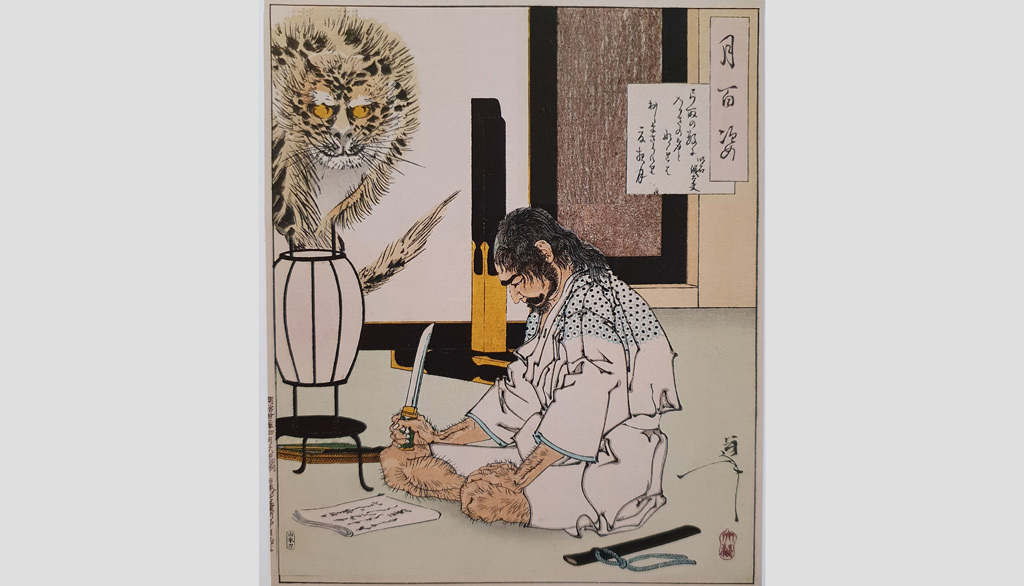
Is he studying the manual?
General Akashi Gidayo prepares for seppuku after losing a battle in 1582. He looks at his last poem, which can also be seen in the woodcut by Tsukioka Yoshitoshi at the top right. Allegedly, his Lord had forbidden him to commit seppuku because he did not want to lose such a capable general. But Akashi saw it differently.
The work was drawn around 1890, i.e. decades after the end of the Samurai epoch. The virtues of the samurai were thus subsequently idealized. The woodcut appeared in the series 月百姿 (Hundred Views of the Moon).